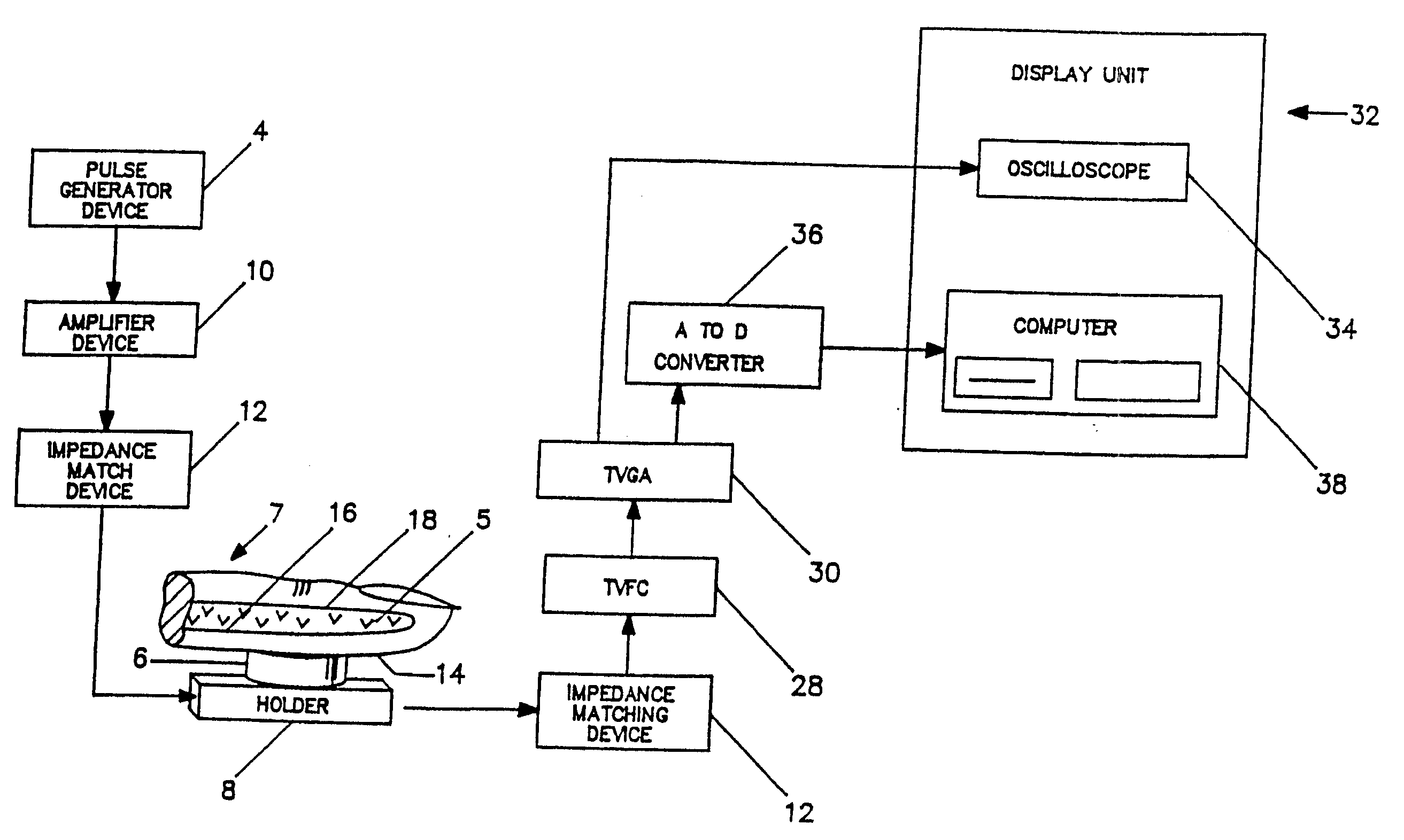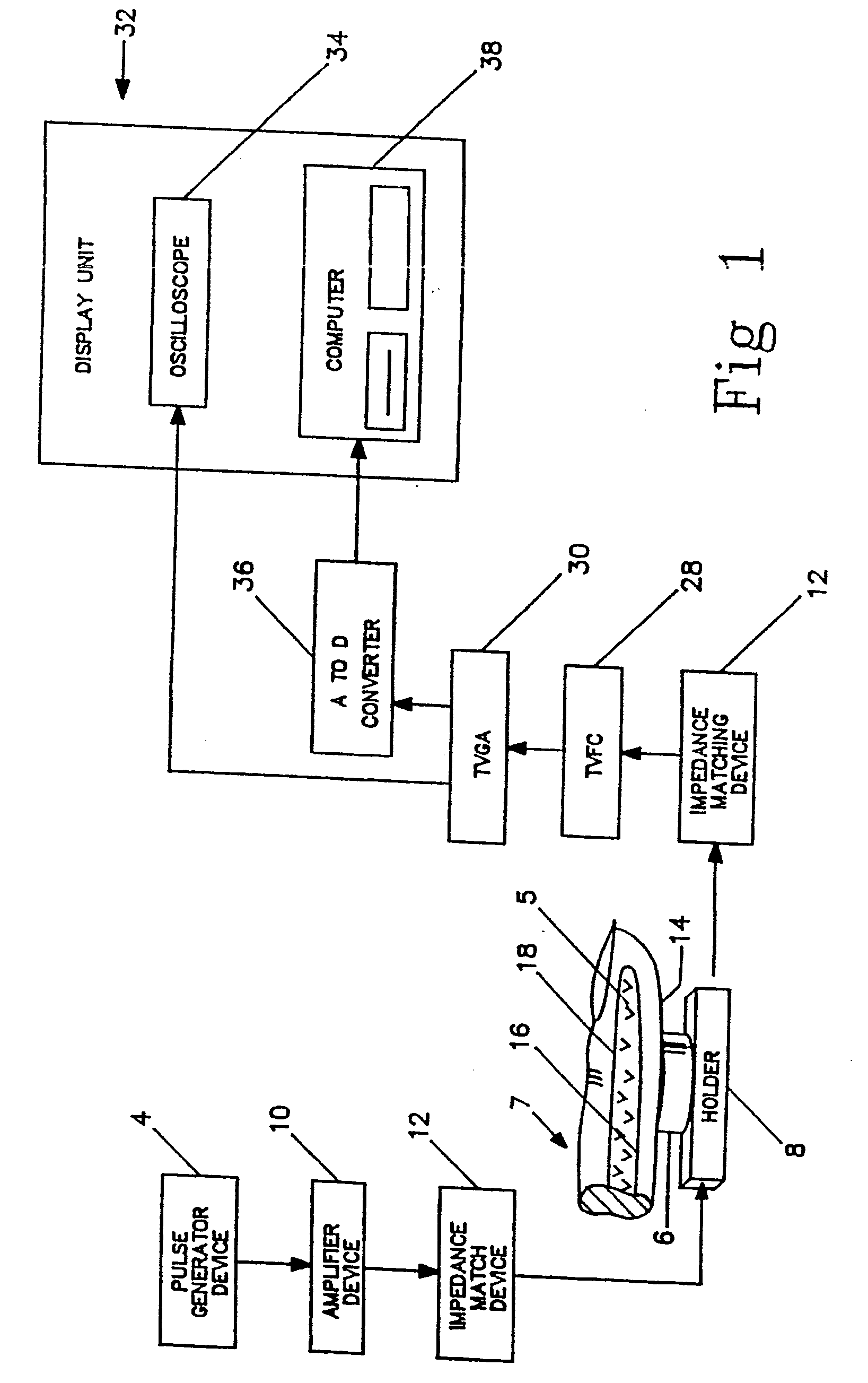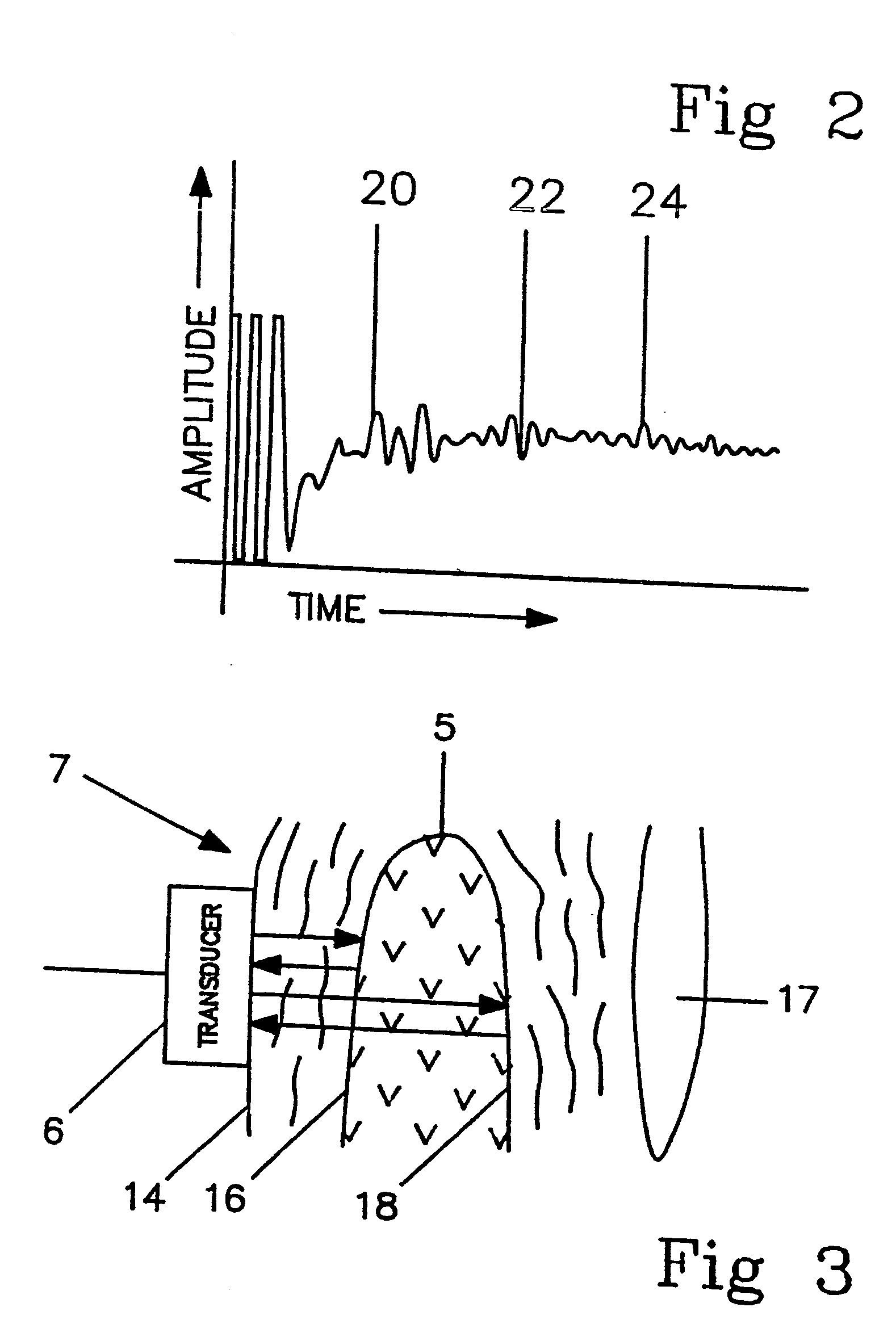Method and system for biometric recognition using unique internal distinguishing characteristics
a biometric and distinguishing characteristic technology, applied in the field of biometric recognition using unique internal distinguishing characteristics, can solve the problems of increasing the number of lost or stolen cards, false negative identifications, and unauthorized entry into a secured facility by an imposter, and achieve the effect of increasing the gain
- Summary
- Abstract
- Description
- Claims
- Application Information
AI Technical Summary
Benefits of technology
Problems solved by technology
Method used
Image
Examples
Embodiment Construction
[0073] An experiment was performed to show that identification, and therefore, verification of an individual could be determined with the use of representative patterns of non-visible internal tissue having distinguishing characteristics unique to that individual. Numerous adults, having fully developed bone structures were used as test subjects. The testing of these adults included taking a representative "boneprint" from the palmar tip of their right thumb. The master representative patterns were compared to an unknown current representative pattern from one of the individuals, and subsequently used to verify the identity of the unknown individual.
[0074] Master representative patterns were first produced for each individual in the test using the system assembled and shown in FIG. 1. The pulse-echo method was utilized by generating an electrical signal having a frequency about 2.25 MHz, with pulse repetition rate of one every 10 msec, a pulse width of 2 .mu.sec and 150 volts in amp...
PUM
 Login to View More
Login to View More Abstract
Description
Claims
Application Information
 Login to View More
Login to View More - R&D
- Intellectual Property
- Life Sciences
- Materials
- Tech Scout
- Unparalleled Data Quality
- Higher Quality Content
- 60% Fewer Hallucinations
Browse by: Latest US Patents, China's latest patents, Technical Efficacy Thesaurus, Application Domain, Technology Topic, Popular Technical Reports.
© 2025 PatSnap. All rights reserved.Legal|Privacy policy|Modern Slavery Act Transparency Statement|Sitemap|About US| Contact US: help@patsnap.com



